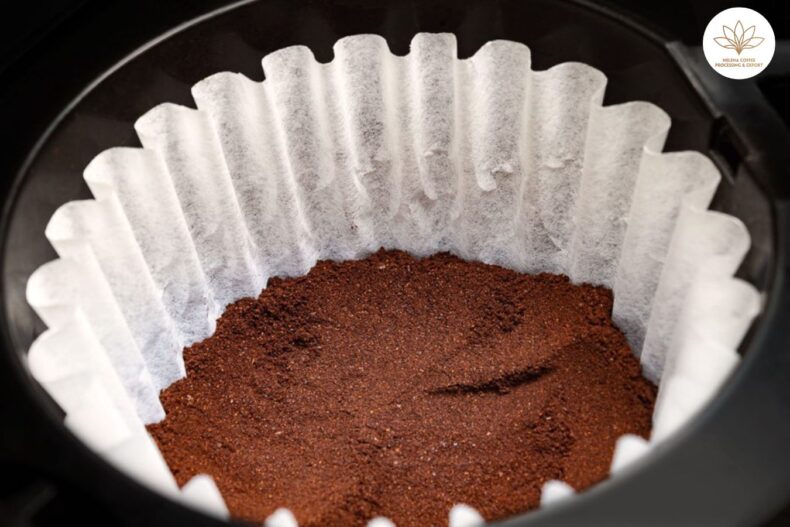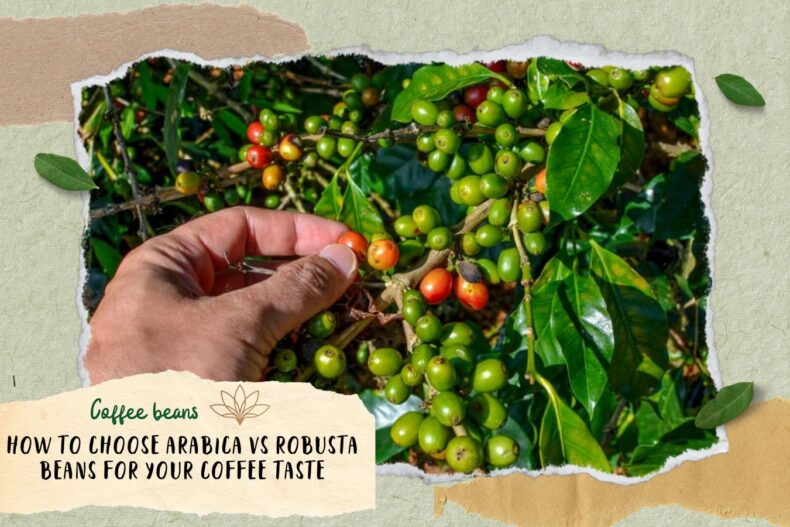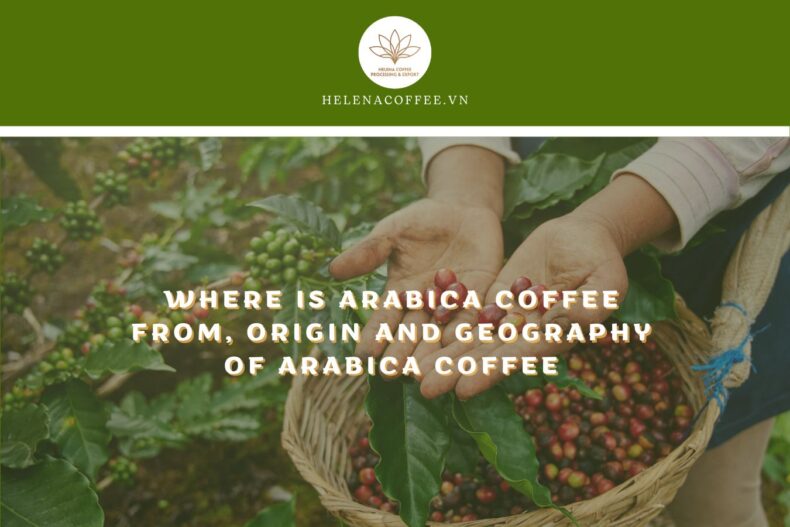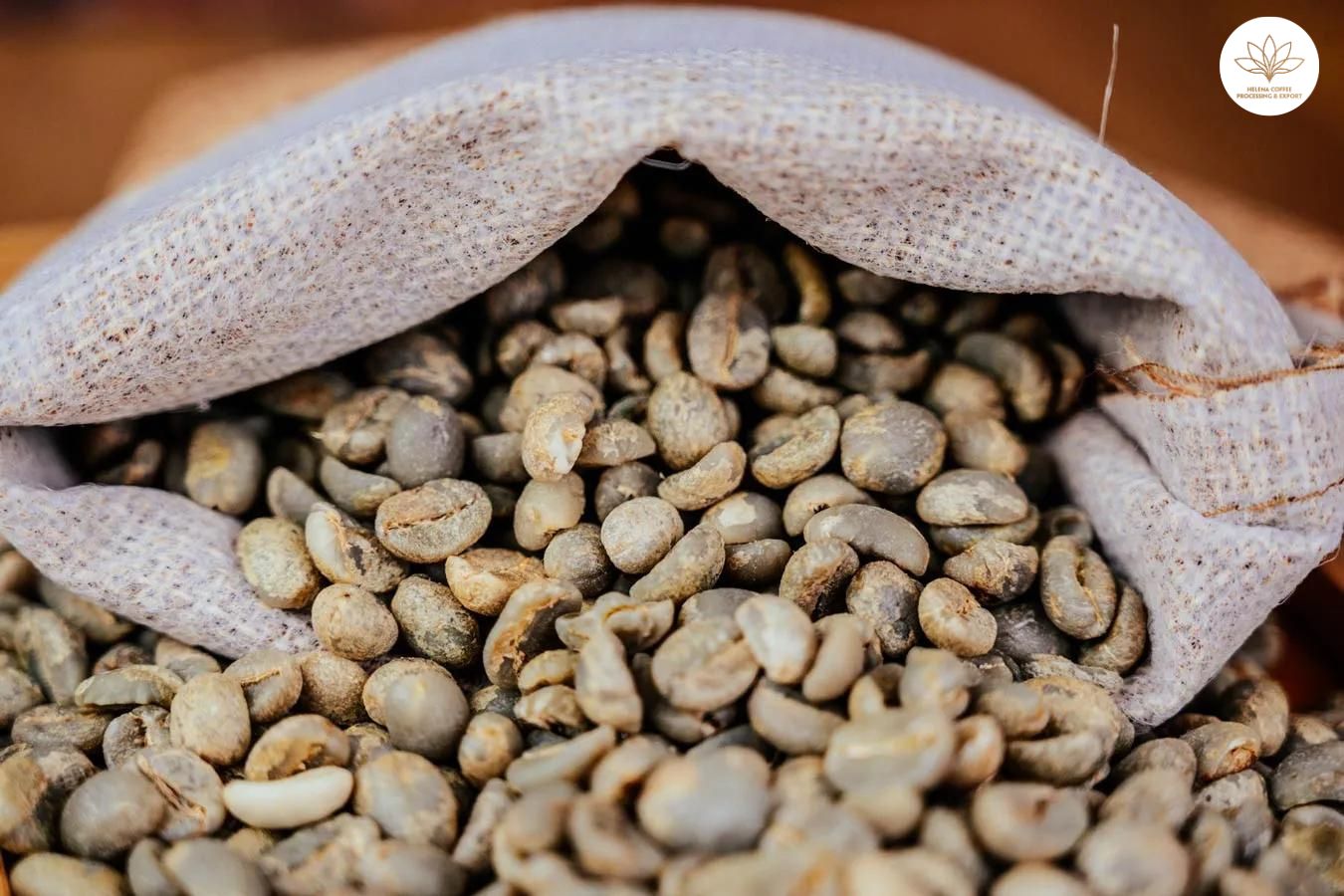
VietNam Arabica Green Coffee Beans: In the diverse and rich world of coffee, Arabica coffee is a familiar coffee, always appreciated for its taste. Let’s explore more about this coffee with DELIGHT and the interesting things surrounding it.
What is Arabica coffee?
Arabica coffee is a type of coffee grown from the Arabica coffee plant (Coffea arabica). It is one of the two main types of coffee commonly used globally, the other being Robusta coffee. Arabica coffee is said to have a delicate flavor, complex aroma and lower levels of acidity and caffeine than Robusta coffee. (Caffeine in Arabica accounts for 1-2%; Caffeine in Robusta is 2-4%)
Arabica coffee trees are often grown in high-altitude areas, with stable, tropical climatic conditions and nutrient-rich alluvial soils. Due to its high quality and distinctive taste, Arabica coffee is often valued higher and is considered top quality coffee.
Biological features of Arabica coffee
Arabica grows well at an altitude of 900-2000m above sea level, rainfall of 1,500-2,500mm/year, suitable temperature of 15-25 degrees Celsius, and temperatures below 7°C can harm plants. Arabica coffee is suitable for high humidity, with levels ranging from 70% to 90%. This means that Arabica coffee growing regions often have distinct wet and dry seasons.
Arabica coffee trees are usually between 2 and 4 meters tall, but can be taller if grown in ideal conditions. The leaves of the Arabica coffee tree have an oval shape, growing symmetrically with petioles. They are bright green in color and usually have a narrower form than the leaves of the Robusta coffee tree.
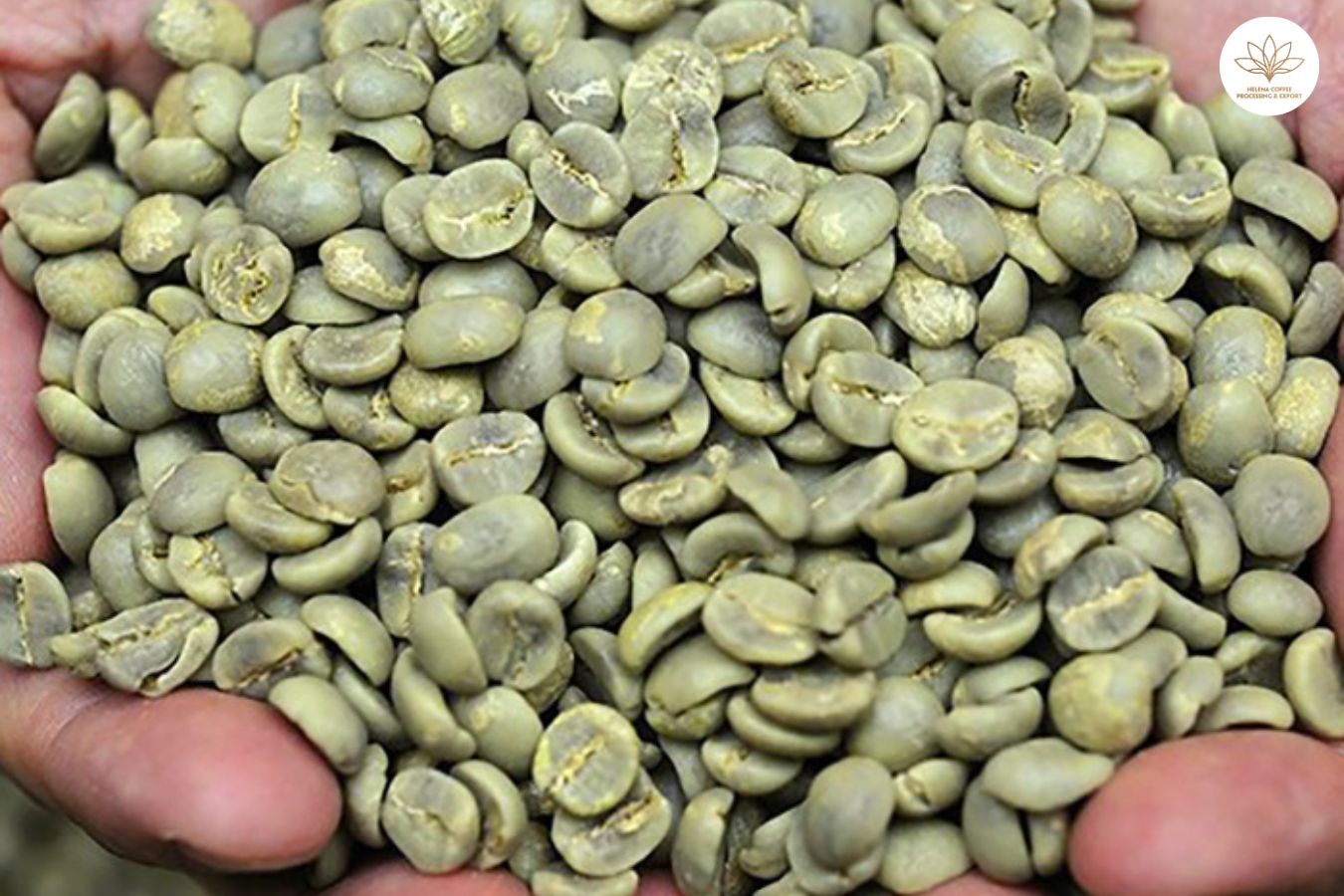
Arabica coffee berries have an oval or conical shape when fully ripe. They are red when ripe, however, can also be yellow or purple. In each coffee pod, there are two coffee beans (green coffee beans) that are covered with a thin film and thus protected from the external environment.
Arabica coffee plants are less resistant to diseases and pests than Robusta coffee. It is susceptible to attacks by many diseases and insects, including mold, root fungus and vermin.
The origin of Arabica coffee
Arabica coffee (Coffea arabica) originated in East Africa, especially from present-day Ethiopia. It is believed to be the first type of coffee known to man and cultivated from about the 7th to 10th centuries. From Ethiopia, the Arabica coffee plant has spread to other regions in East Africa such as Kenya, Sudan, Tanzania and Uganda.
For a long time, Arabica coffee has been introduced into cultivation in other regions worldwide. Today, Arabica accounts for 70% of worldwide coffee production
Arabica coffee growing regions in the world
Arabica coffee is grown all over the world, but there are some well-known and important growing regions.
1. Brazil
Brazil is the world’s largest producer of Arabica coffee. Arabica coffee growing areas in Brazil have a coffee growing area of 100,000 hectares. Each year, the country produces more than 2.5 million tons of Arabica coffee.
2. Colombia
Colombia is famous for its high-quality Arabica coffee with an output of about 810,000 tons per year. This is one of the 3rd largest suppliers of coffee in general and Arabica coffee in particular in the world.
3. Ethiopia
Ethiopia is home to the Arabica coffee plant and has a variety of variations and flavors. For more than 1000 years, people here have considered coffee cultivation as the main job. Coffee also accounts for 28% of exports each year in this region.
4. Kenya
Kenyan Arabica coffee has a unique flavor and is famous in the world. Kenya’s Arabica coffee production is around 600,000 to 700,000 bags of coffee per year.
5. Costa Rica
Costa Rica produces high-quality Arabica coffee, which is always appreciated for its distinctive, rare flavor
Vietnam Arabica coffee growing area
Vietnam is not the main Arabica coffee growing country, but is more famous for Robusta coffee. However, there are certain regions in Vietnam that also grow and produce Arabica coffee with characteristic taste and good quality.
1. Dalat
Considered as the “paradise” of Arabica coffee, Da Lat possesses favorable conditions for good development of Arabica coffee trees: Cau Dat and Da Lat own a central plateau with a large area of basalt red soil, an average altitude of about 1,500 – 1,800 meters above sea level; The climate is cool, temperate, with an average annual temperature of 15 to 24°C.
In particular, the Cau Dat – Da Lat area is where famous and high-quality Arabica coffee is grown in Vietnam. This is a “rare” region that grows and produces Moka coffee with about 200 Moka roots left in Vietnam
Buy Moka Cau Dat Coffee – Dalat here
In addition to Cau Dat – Dalat, some places in Lam Dong province with an altitude of 800 – 1000m above sea level, climate from 15 to 24°C also cultivate and produce Arabica coffee beans.
2. Son La
This is an area with more than 100 years of history of growing Arabica coffee. Son La has many weather advantages such as: Altitude of 800 meters or more, heavy rainfall in the year, Average annual temperature ranges from 16 to 23°C, mountain mullet … This advantage has helped many regions here have a large annual coffee production such as Chieng Ban, Sinh Ban …
3. Quang Tri
In Quang Tri, there is a famous Arabica coffee growing area, Khe Sanh. Khe Sanh Arabica coffee has become a famous brand and is highly appreciated by consumers for its quality and taste. Khe Sanh Arabica coffee is one of the eight key tea coffee regions of Vietnam. Khe Sanh has an altitude of about 600 – 800 meters above sea level, the average annual temperature ranges from 22 to 25°C; along with the coffee cultivation techniques of the local people have created a special Arabica coffee product from this land.
Arabica Khe Sanh has won many famous awards at specialty coffee competitions. Most recently, in the contest “Vietnam Specialty Coffee 2021” organized by Buon Ma Thuot Coffee Association, in the Arabica coffee category, Khe Sanh Arabica coffee won the first prize and won the import of coffee into the US market.
Arabica coffee flavor
Arabica coffee has characteristic flavor characteristics. According to experts, Arabica coffee has a sour taste combined with a slight bitterness. The scent of Arabica is usually fleeting, ethereal and delicate. When prepared, Arabica coffee water is light brown in color and has an amber hue.
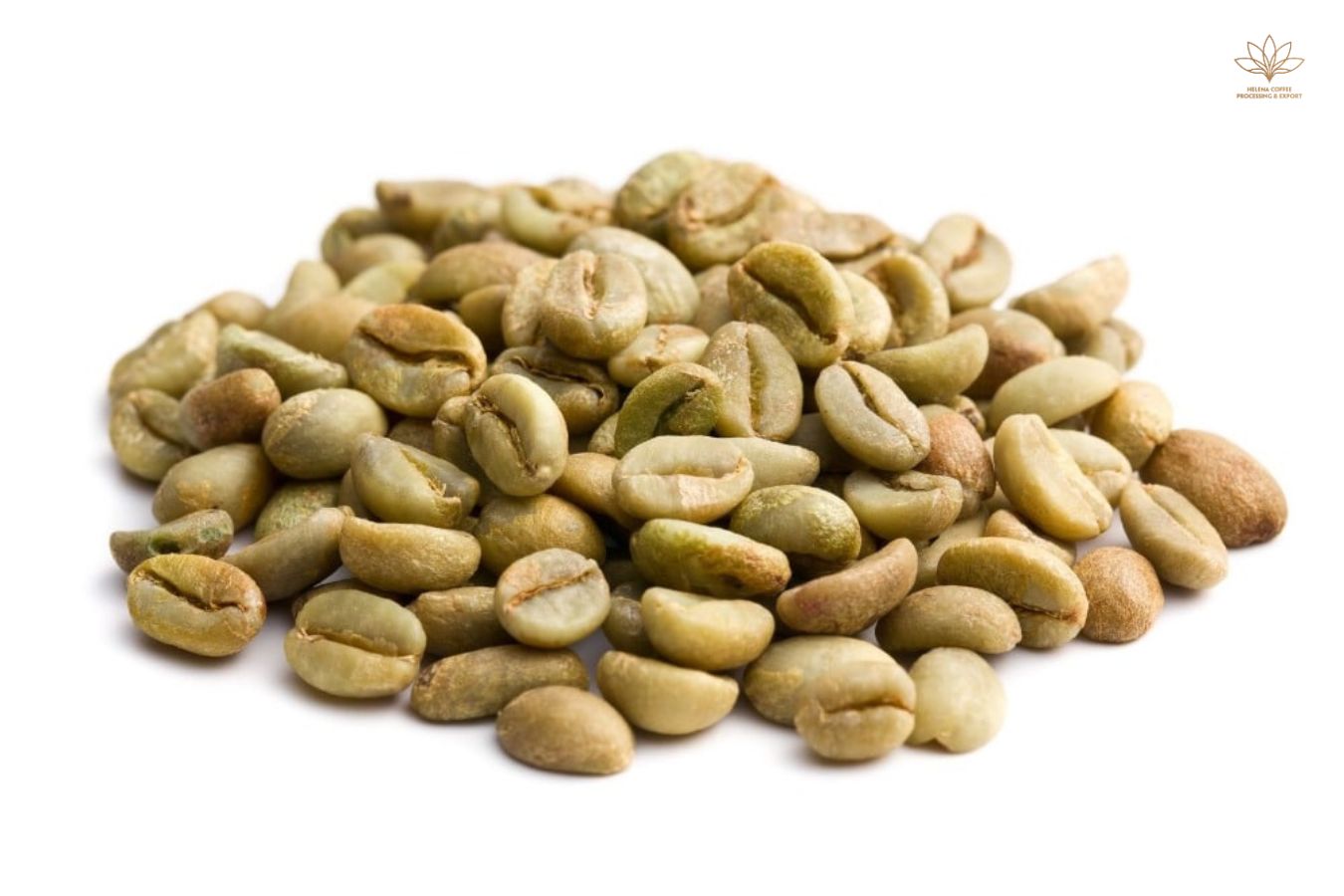
In addition, the taste of Arabica coffee can also be influenced by factors such as altitude, soil, climate of the growing region; method of care. Each region has its own characteristics, which can make slight differences in the taste of Arabica coffee.
How to use Arabica coffee
Due to diverse flavor characteristics, roasted Arabica pure coffee beans can be used to prepare by many methods such as: Pour over, Moka, Syphon, Brew French Press .. These brewing methods aim to fully enjoy the pure Arabica coffee flavor without the use (or very little) of milk or sugar. In addition, pure Arabica can also be used for filtering, machine brewing to suit rich coffee tastes, used in combination with sugar and milk.
In addition, blending Arabica coffee with Robusta is also a common method to create a balance of flavor and richness for coffee. Blending Arabica and Robusta can help enhance aroma and strength, while reducing bitterness when mixing filters and other beverages.
Helena Coffee Vietnam: A Legacy of Exceptional Coffee
Nestled in the heart of Vietnam’s verdant Central Highlands, Helena Coffee upholds a family tradition steeped in the rich coffee heritage of the region. This family-owned enterprise has carved out a niche in the world of coffee connoisseurs, recognized for premium beans, a passion for sustainable cultivation, and a deep-rooted commitment to ethical trade.
At the core of Helena Coffee’s philosophy is a profound respect for the land and its bounty. The company’s Arabica and Robusta beans are a testament to the Central Highlands’ optimal climate and fertile soils, yielding coffee with a remarkable flavor complexity that is celebrated by aficionados across the globe.
FAQS:
